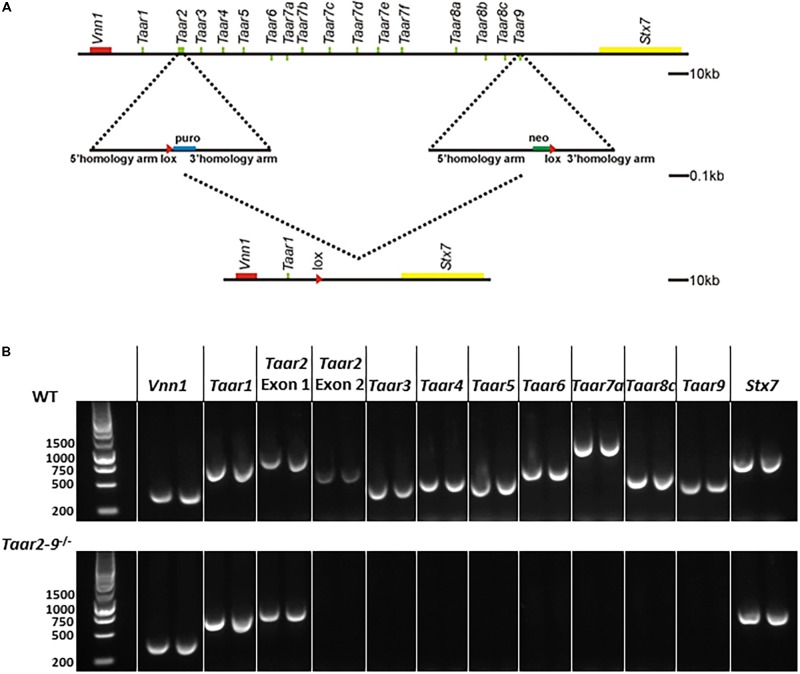FIGURE 1.
Generation of Taar2-9 cluster deletion mice. (A) Overview of the chromosomal deletion method. Similar to human and rat, the entire family of mouse TAAR genes maps to a narrow region of a single chromosome (Li et al., 2013). The murine Taar cluster (Lindemann et al., 2005) and neighboring genes (Vnn1, Stx7) are shown. A recognition sequence (loxP, red triangle) for the Cre site specific recombinase was inserted into the Taar2 gene using a targeting vector with homology arms flanking a puromycin selection (puro) and homologous recombination. Similarly, a second loxP sequence was inserted into the Taar9 gene using neomycin (Neo) selection. Cre recombination was used to delete 170 kb of the murine chromosome 10. This includes all Taar genes except Taar1 and Taar2 Exon1. There are no known other genes or RNAs encoded in this region. (B) PCRs from genomic DNA from tail biopsies using oligonucleotides encompassing the Taar genes Taar1, Taar2 Exon1 and Exon2, Taar3, Taar4, Taar5, Taar6, Taar7a, Taar8c, Taar9 and the flanking Vnn1 and Stx7 produced PCR fragments of the correct size in the wild type (WT) samples, but not for Taar2 Exon2 until Taar9 in the Taar2-9−/− samples.

